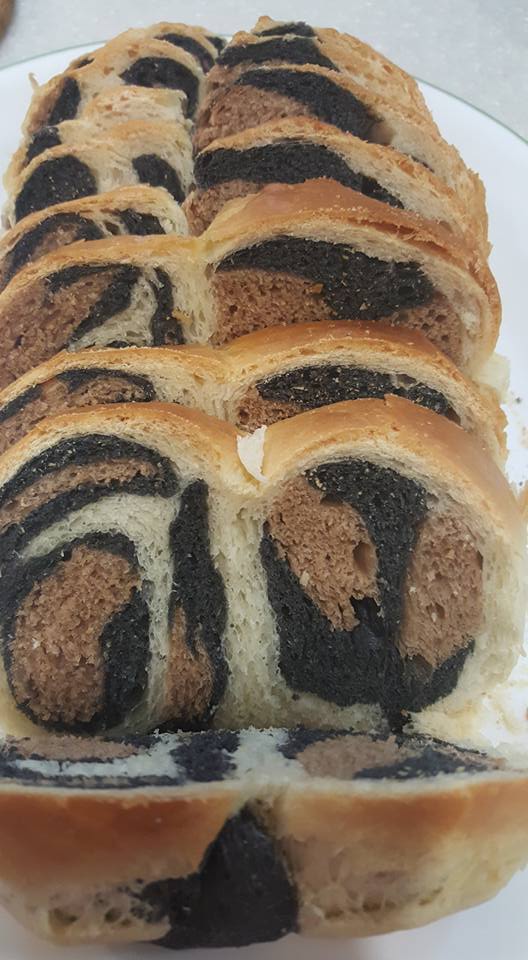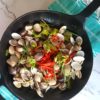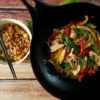Another name for this recipe is the Five Thousand Dollar Bread, because it was rumoured that the recipe developer spent RMB5000 in search of the perfect baker’s ratio to get this recipe.
Thanks to Victoria bakes’ reference, I checked out the website 爱和自由, where this recipe was originally published to further understand how it was developed, and therefore the rationale of and the science behind it.
The author was given a recipe by a friend and was told it was the recipe obtained after spending the RMB5000 in research for. The author also obtained hints from a bread master Li, of the baker’s ratio and then developed it from scratch. So, I’d say that I’m not sure if what he published is really the RMB5000 bread recipe or one that is a derived or inferred version of this bread.
The author said that he figured out the recipe from discussing with Breadmaster Li, the following were revealed through their conversation:
1. The sugar and flour ratio
2. The absence of milk powder
3. The flours used is a mixture of high protein flour (like bread flour) and medium protein flour (like plain flour)
While the original recipe given by his friend is as follows:
Starter dough: Flours – 50%, water – 40%, Sugars – 4%, Yeast – 1.3%
Main dough: Flour – 50%, Fat – 8%, Egg – 13%, Custard Powder – 1%, Salt – 1%, Sugar – 10%, Water – as required
Instead of lifting the recipe from the original website or use Victoria’s translated version, I have decided to try and follow the touted original recipe given to the author and then modify it from there as I use this bread recipe more often. I debated between two methods I really want to try: the French autolyse method and the Middle Age European starter dough method. It is quite obvious this one fits a starter dough method better, so I’d just leave it as it is for now, but I have made it an overnight sour dough method to allow for fermentation. Why… just because I thought it is interesting and I like the complex taste.
If you ask me, among the Asian breads that I bake, in order of preference:
- Tangzhong bread by the Taiwan’s Bread Doctor Yvonne Chen (most efficient and softest for days)
- Vegan tangzhong bread by Pamela Lim (I’d alternate between this and the tangzhong one similar to above, slightly flatter taste)
- The Vintage (or $5000) bread adapted from the Chinese website (takes way too long for a good bread)
- The killer toast adapted from Victoria bakes (similar to all one-proof breads)
- One-proof Asian breads by Pamela Lim (valuable if you are in a rush)
In the coming weeks, I will introduce into our bread methods the autolyse method Professor Raymond Calvel described in his book ‘Le Gout du Pain’.
As always, I believe one should just stick to a recipe you are comfortable with, we cannot really dictate which is the best as all our kitchens are different and have different conditions. Breads are very dependent on the kitchen conditions. I encourage you to try different recipes and find one that works, and then stick to it. Then, you will have great breads everyday, without worrying about looking into a recipe and searching for what to do next.
Just my two cents’ worth, and so enjoy!
RMB5000 Vintage Bread Recipe
Ingredients
Starter Dough
- 200 g Flour 100g bread flour, 100g plain flour
- 160 g water at 40C
- Sugar 16g
- Yeast 5g
Main Dough
- 200 g Flour 100g bread flour, 100g plain flour
- 32 g Fat butter
- 1 egg
- 4 g custard powder or milk powder
- Water as required I didn't need this
Instructions
- Mix the starter dough together and let it ferment overnight or at least 4 hours.
- Add the main dough ingredients except the fat and knead until elastic and gluten formed.
- Add the fat and knead until it passes the window pane test. (not more than 10 minutes)
- Rest and proof until the dough doubles.
- Punch down (important to get fine crumbs) and shape dough.
- Proof till the dough doubles its size again.
- Bake on the lowest shelf in a convection oven at 180C for 30 minutes.
If you’d like to not only learn how to follow recipes but learn how to bake, we have a free baking course. The details of how to join the course is available at our Facebook group. Don’t just learn how to follow recipes. Get the basics right and learn how to bake.










